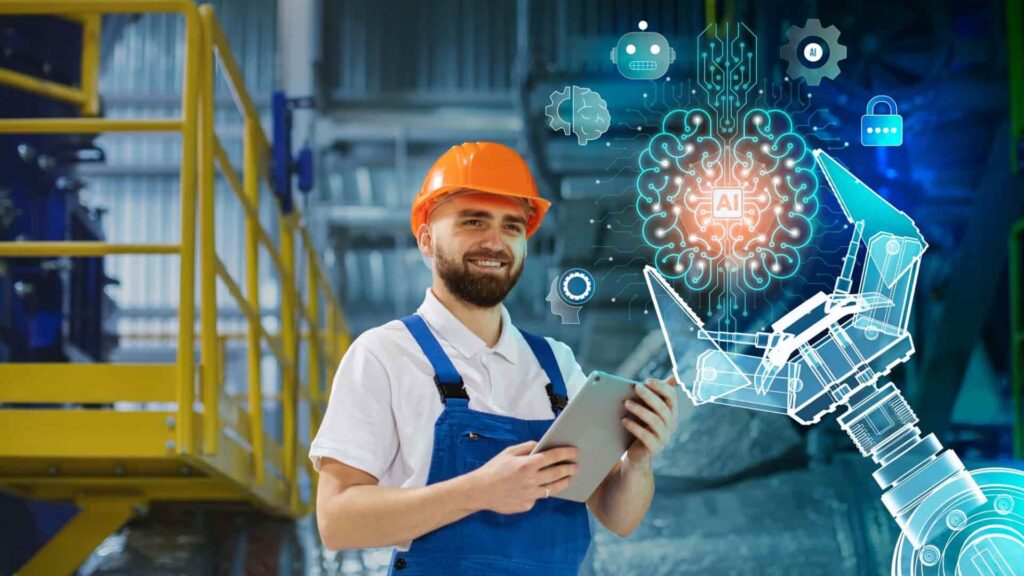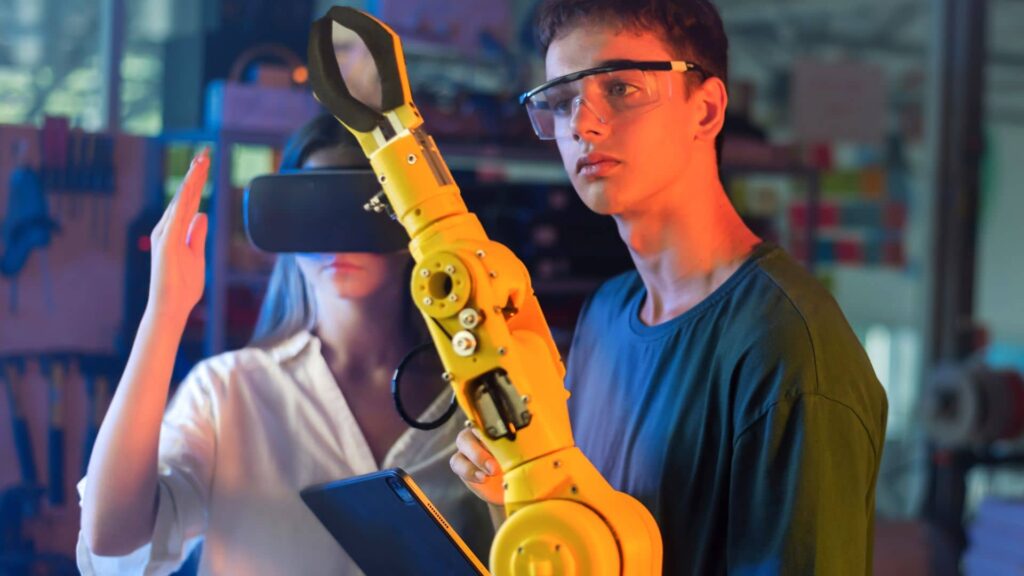Engineering has been greatly impacted by automation and artificial intelligence (AI). These technologies have the power to completely change how engineers analyze, develop, and optimize processes and systems. It’s crucial to remember that while automation and artificial intelligence have many advantages, there are drawbacks as well, such as the requirement for strong cyber security, ethical issues, and job displacement worries. In order to optimize the benefits of new technologies and mitigate any potential negative aspects, engineers and organizations must properly plan and execute their implementation.
Emergence of Artificial Intelligence in Engineering
The advent of Artificial Intelligence (AI) in the engineering domain has brought about revolutionary changes that have profoundly affected multiple engineering specialties. Artificial intelligence (AI) tools, such deep learning and machine learning, have been used in engineering activities to improve productivity, accuracy, and creativity. In 2022, machine learning will be one of the most in-demand engineering specialties. Because engineers are so good at addressing complex problems, there is already a demand for knowledge on how to integrate AI into operations.
It is estimated that 90% of large firms have invested in artificial intelligence (AI) technologies. However, at the moment, less than 15% of these businesses use AI in their daily operations. The engineering sector is seeing one of the fastest-growing technologies: artificial intelligence (AI). As things stand, new technology is opening up a variety of opportunities for engineering expertise, despite the long-standing concern that AI may destroy some jobs.
Integration of AI and Automation in Manufacturing
AI is utilized in manufacturing to boost automation, precision, and productivity at many stages of the production process. Algorithms, data analysis, and machine learning are used to enable robots to perform jobs that formerly required direct human engagement. By utilising features such as quality control, predictive maintenance, process enhancement, and others, this technology increases productivity while reducing downtime. AI-powered systems are able to analyze enormous volumes of data in real-time, which allows them to spot trends, optimize workflows, and make intelligent judgments that humans would overlook.
Also Read: The Vital Significance of Artificial Intelligence
Businesses can benefit greatly from AI and automation since they can boost output, effectiveness, and bottom line results. Among the main benefits are increased efficiency, improved productivity, better data analysis, and more favorable bottom-line outcomes. Complexity, reliability, security, and regulation are only a few of the difficulties in creating and applying AI for car electronics.
AI in Structural Engineering and Design
Artificial intelligence (AI) algorithms can be used to analyze sensor data from structures, such as vibration and temperature data, to predict when maintenance is required and to identify warning signs of structural failure before they become evident. Cameras with AI capabilities are employed for monitoring and inspection. Structural analysis systems powered by artificial intelligence have the potential to model and evaluate complex structural behavior, helping engineers identify potential weak points, predict failure modes, and enhance structural performance. AI-powered optimisation aims to enhance the customization, cost-effectiveness, and utility of digital experiences by promptly responding to user preferences. These technologies enable organizations to make data-driven decisions that improve user engagement, website functioning, and conversion rates.
Machine Learning for Energy Efficiency in Engineering

By forecasting how much energy tools will be used, machine learning (ML) optimizes energy efficiency models. In the past five years, as demand for IOTs (Internet of Things) and smart buildings has increased, machine learning approaches have become more popular in the design of energy-efficient systems. Technological developments that combine sustainability and energy efficiency are essential for sustainable growth in smart cities. An essential function of artificial intelligence (AI) is to forecast, manage, and coordinate the supply of electricity. The drive towards a low-carbon transition on a worldwide scale highlights the role AI plays in accomplishing energy targets. AI-powered “smart consumption” modifies energy consumption habits, allowing decentralized power systems to facilitate balanced energy flows.
AI in Traffic and Transportation Engineering
Artificial intelligence (AI) systems can be used to recognize and track traffic occurrences, such as collisions, driving in the wrong direction, speeding, and obstacles. AI is used to analyze real-time traffic data from several cameras and Internet of Things (IoT) devices, including vehicles, buses, and even trains. It is expected to significantly lower the number of accidents, since human error is the cause of over 90% of accidents. Travel costs can be reduced by using autonomous vehicles, or AVs. For example, when AVs are deployed in public transportation, labor costs will be reduced. Smart carpooling can help cut expenses even more. The elimination of human drivers could greatly reduce traffic congestion in an autonomous vehicle.Compared to more traditional forms of transportation, this might result in a sharp rise in car sharing, which would lower the number of automobiles on the road and the overall carbon impact.
Challenges of AI Implementation in Engineering
There are many advantages to integrating AI and automation into engineering processes, including better accuracy, more efficiency, and lower costs. Safety and dependability, algorithm complexity, human-AI collaboration, integration with current systems, and ethical considerations (data collecting, privacy, and decision-making) are some of the difficulties and ethical issues it also raises. As automation and AI technologies develop, worries about job displacement and human-AI collaboration are becoming more pressing. The potential for AI and automation to displace human labor in a variety of industries, resulting in job losses and economic instability, is the main source of these worries. It’s crucial to remember that these worries are not without context and that there are chances for human-AI cooperation that might result in more fruitful and satisfying work settings.
Digital Twin Technology and Engineering Applications

Digital twins are virtualized copies of physical objects that make use of analytics, visualization, simulation, and real-time data. They improve decision-making, reduce expenses, and increase productivity. Manufacturers gain from the seamless integration of digital twins, which lowers costs and increases value. Digital twins are used by engineers and architects to create buildings by providing information about materials, upkeep, and usage. Better quality is ensured by streamlining construction oversight and communication.
AI-driven Predictive Maintenance in Industrial Plants
Asset management is being revolutionized by AI-driven maintenance prediction, which makes use of real-time analysis and previous data to forecast equipment breakdowns and enable preventive maintenance. AI lessens the need for emergency repairs by spotting defects and analyzing behavioral patterns to suggest the best periods for replacements or repairs. AI improves data analytics across a range of industries, providing insightful information on customer preferences, industry trends, and company tactics. AI-generated maintenance schedules save resources by minimizing breakdowns and preventing over-maintenance. AI, for instance, keeps an eye on the spindles of equipment during milling processes, minimizing the need for expensive maintenance. This novel strategy minimizes unnecessary expenditure while maximizing efficiency.
Cyber security in AI-Integrated Engineering
Risks to AI systems include adversarial machine learning attacks, in which attackers change input data to change the model’s output, possibly resulting in faulty judgment and security flaws. The increased possibility of data breaches and unlawful access to personal data is the main source of privacy concerns. Because so much data is being gathered, there’s a chance that it could be misused due to security holes or hackers. To protect against cyber threats, organizations need to routinely evaluate the security of their infrastructure, find any vulnerabilities, and prioritize making the necessary adjustments. This entails putting software and hardware upgrades, security patches, and strong security configurations into place on time.
Human-Centred Design in AI Engineering Solutions
It is essential to include human issues while designing AI systems in order to guarantee usability, security, and user acceptance. Because user experience has a direct impact on how consumers engage with and perceive AI technologies, user experience considerations are essential to AI-integrated engineering solutions. It not only makes AI more acceptable, safe, and easy to use, but it also helps prevent the dangers and unfavorable effects that come with badly built systems. AI engineers may develop solutions that are not only technically sound but also truly helpful and easy to use by giving user experience first priority. It is crucial to build AI systems that enhance human abilities rather than take their place. Users are more inclined to embrace and employ AI when they perceive it as a useful tool that improves their work.

It was once thought that workers would eventually be replaced by AI. Organizations see that AI is creating a highly skilled workforce and increasing export potential. Furthermore, engineering jobs can now focus more on activities that add value because automation and AI can now complete the basic and tedious tasks. This makes engineering employment much more dynamic and fulfilling.
Future Prospects of AI and Automation in Engineering
With a number of fascinating trends and advances, including those in aircraft, electronics, energy storage, and other fields, the future of AI and automation in engineering holds great promise. Quantum algorithms are also useful for real-time complex equation solving, supply chain optimization, and molecular modeling. The use of AI-powered generative design is revolutionizing the way engineers approach product design. This can result in extremely creative and effective ideas for a variety of industries, such as architecture and the automobile sector. In the fields of manufacturing and logistics, we should anticipate seeing an increase in self-driving cars, robotic systems, and autonomous drones. These innovations will enhance precision, safety, and efficiency across a range of engineering uses.
It’s crucial to remember that even if these developments have many advantages, there are drawbacks as well, such as the requirement to upskill the workforce, hazards related to cyber security, and ethical issues. It is important for engineers and organizations to remain up to date and adjust to these new technologies in order to fully utilize their potential and tackle any related difficulties.
